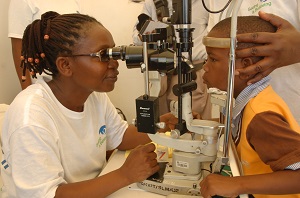Join a powerful, unprecedented alliance for better eye health for all.
Join IAPB-
Choose an alternate language here

The recent Child Eye Health Joint Consortium meeting in Nairobi in June 2014 captured some of the value and also the challenges of working in a consortia. Consortia partners were asked to share their thoughts on the strengths and challenges of consortia working. A greater number of positive comments than negative comments were recorded which in itself is a strong statement about the value of consortia working to the members.
The following comments from members are a selection that illustrates the added value that consortia working can bring:
“Working in a consortia brings a realisation of how much more can be achieved on each objective by harnessing the varied input from each member –it is awesome.”
“A consortium gives a rich pool of experience and resources to work with”
“The consortia approach allows for broader implementation coverage (geographic and fields of specialisation) and hence more people benefit in more ways.”
Members expressed that the consortia provided a real opportunity for sharing knowledge and experiences and is helping to bring greater synergy to child eye health messages in the region.
Of course we also face challenges as by its nature a consortia approach is a more complex way to work. As one participant said, “Consortia working push organisational borders and practices” and there was recognition that “achieving standardisation & harmonisation takes time”.
At CBM we are using every opportunity that leading this consortium brings to learn and grow. We are using these experiences both internally and externally for our own learning and to share with others as they start to lead consortia. The SiB funding is allowing us to grow our own expertise in consortia management, but most of all to take a lead role in scaling up and adding value to the delivery of quality eye health services for children across East Africa.
Laura Gore